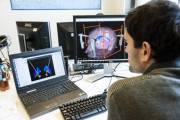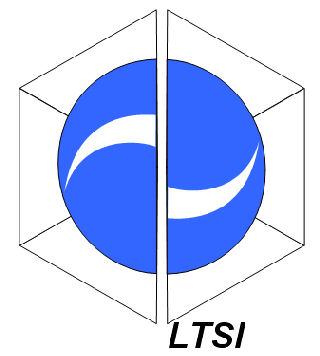News
Members
Publications
Software / Data
Job offers
Images / Videos
Collaborations
Conferences
Lab meetings: "Les partages de midi"
Practical information
Members Area
Next conferences we are in …





This is an old revision of the document!
We use statistical analysis tools to automatically detect and classify MS lesions from MRI images. Hereunder are shown different MS lesions types as they appear on MRI (T1-w, T2-w, Flair and gadolinium enhanced T1-w (Gd T1-w).
To make the lesions detection less fastidious and error prone, we have proposed automatic and supervised procedures to segment MS lesions in longitudinal MR multi-sequences. Based on a parametric normal appearing brain tissue model (NABT), we have proposed a robust algorithm that allows the spatio-temporal segmentation of the abnormalities and propose an original rejection scheme for outliers using a new estimator: the Trimmed Likelihood Estimator. Two different segmentation methods were developed to have a better and more meaningful segmentation. On the one hand, a local segmentation approach, the Mean Shift, was used prior to the robust Expectation Maximization to classify these regions as NABT or lesions. On the other hand, the robust EM-based approach has been used to discriminate between MS lesions and NABT and to initialize the above graph-cut and spectral gradient segmentation scheme. Evaluation was performed on synthetic and real images and compared over previously published methods showing superiority thanks to the ability to interactively improve the segmentation by the Graph Cuts.


